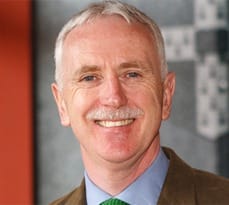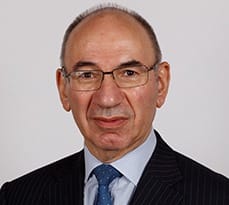University endowments use their long-term perspective to invest countercyclically at times of stock-market crisis, says new study at the Centre for Endowment Asset Management at Cambridge Judge Business School.
While many retail investors may want to take a long-term perspective, to plan for retirement and hopefully leave a nice nest egg for their children, most can’t afford to do so owing to short-term liquidity needs and a concern about downside risk. In contrast, university endowment funds can plan for a truly long horizon of 50 years or more in choosing investment policy.
A new study from the Centre for Endowment Asset Management (CEAM) at Cambridge Judge Business School finds that such endowments often exploit their long-term horizon by behaving countercyclically, buying assets when prices are low and selling them when prices are high. This stands in contrast to the tendency of institutional investors like insurance companies and pension funds to act procyclically at times of large market swings – buying assets after they have become more expensive and selling them after a decline.
The study published in the 75th Anniversary Edition of the Financial Analysts Journal looked at 12 top US university endowments from 1900 through 2017. It finds that these endowments typically bought risky assets as their prices declined following the worst US stock-market crashes (in 1906–1907, 1929, 1937, 1973–74, 2000, and 2008). “Such events provide opportunities for investors willing to lean against a cold wind,” the study says.
The study’s main finding is that the 12 endowments typically traded countercyclically before and after periods of major market dislocation. In particular, they increased their allocations to risky assets, as their prices fell. Thus, the evidence suggests that endowments do, indeed, exploit their long-horizon advantage.

The study – entitled “Seventy-five years of investing for future generations” – compared university endowment behaviour in the post-1945 period with earlier historical periods. The article is co-authored by Dr David Chambers, Academic Director of CEAM and Invesco Reader in Finance at Cambridge Judge; Professor Elroy Dimson, Chairman of CEAM; and Charikleia Kaffe, researcher at CEAM.
The research is based on a hand-collected body of endowment information on eight Ivy League schools – Brown University, Columbia University, Cornell University, Dartmouth University, Harvard University, Princeton University, the University of Pennsylvania and Yale University – as well as four other top schools, Johns Hopkins University, the Massachusetts Institute of Technology (MIT), Stanford University, and the University of Chicago.

The assets of the average endowment in the sample grew at a real annualised rate of 4.1 per cent over the study period – ranging from 5.3 per cent at Princeton to 2.6 per cent at Johns Hopkins. The average growth rate of Ivy League assets was 4.3 per cent compared to 3.7 per cent for non-Ivy League schools, a difference which is not statistically significant. The study notes that endowment growth reflects both gifts and investment performance.
The article sketches the history of university endowments from the 13th Century, when the oldest colleges at Oxford and Cambridge received gifts intended to support them in perpetuity – often in the form of agricultural real estate. In the early 20th Century, endowments invested most of their financial assets in high-grade bonds, and this changed in the 1930s and 1940s with a move toward risky assets such as common stocks, and then from stocks to alternative assets beginning in the 1980s.


